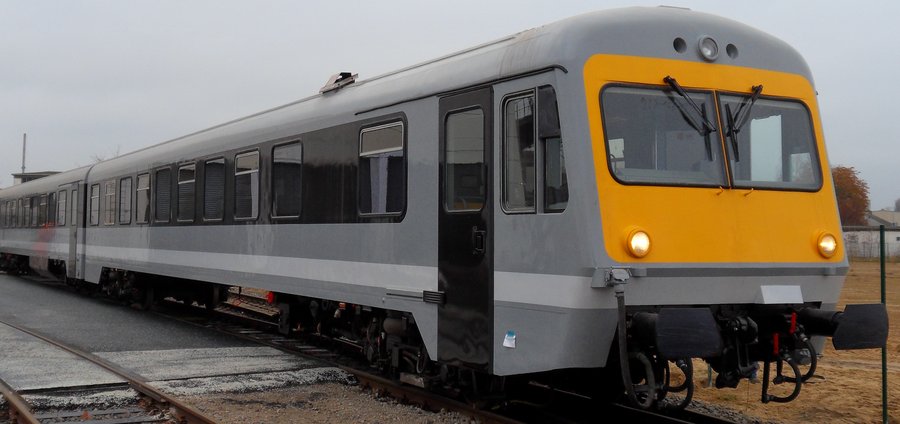Used DMU’s for RftV?
Even though our local politicians haven’t a clue about the ‘Rail for the Valley’ project, European professionals are, as evidenced by the following letter.
Dear Sir and Madam,
HEROS would be able to provide used DMU’s (diesel tram function without toilet but higher platform required) or DMU for regional service (with toilets and steps for entrance from low platform level).
I think it could be a helpful to have an “evolutional concept” for such an idea.
The investment in the infrastructure is a must, but you may start with refurbished rolling stock in reasonable condition and quality to reduce the total cost for the taxpayers at the beginning of such a project.
Our available types of rolling stock provided are in Europe still in service and could allow a significant reduction of the necessary investment at least for the first 10 years, if this would be required.
The advantage of our available rolling stock is the low axle weight and the low fuel consumption due to the lower weight in comparison to DMU’s from North America.
The rolling stock could not run on the railway line used by ai???class Aai??? freight operators, but does also not require the infrastructure for operation with very heavy rolling stock (bridges, rail, etc.). I think the idea is to use an existing but not used line or a completely new line, is that assumption correct?
Our available rolling stock could be used for a bridging operation on an infrastructure tram/LRV-systems.
Best regards
Uwe Sauer
CEO
HEROS Helvetic Rolling Stock GmbH
Pfingstweidstrasse 102b, 8005 ZA?rich-CH
Tel. + 41 (0)44 268 69 29,
Fax. +41 (0)44 268 69 28
It makes perfect sense to use used DMU stock for the initial phase of a Vancouver to Chilliwack line, especially when there is no street running.
Using used DMU’s on an hourly Vancouver to Chilliwack 60 minute service or an hourly Vancouver to Abbotsford/Huntington service, with 120 minute service to Chilliwack, would make the start-up service a bargain when compared to other transit projects in the region at, a cost less than $750 million.





Of course, getting rail transit on the ground isn’t something the provincial governments interested in, just more highways. Expand hwy 1 to 6 lanes to Abbotsford. A new interchange at 216th. Brand new (low quality) hwy 17, new Port Mann, new Golden Ears, new Massey Tunnel… No problem, we can build roads. We can’t build transit.
Maybe we can get some traction on this issue by making the federal candidates try to buy some votes by chipping in on a project like this.
I think RftV is good because the track is there, but I think at grade rail (not skytrain), down Hwy 1 from Braid/Brunette to Chilliwack, with stops at all the interchanges, and bus service to the city centers (and park and ride, with good bike parking like the new ones at skytrain). I think this would be an ideal solution. It’s a route people are used to commuting on. But it would cost more. The government doesn’t seem to mind spending money though, just spending money on transit.
Either way would be nice I think. I would use either.
rong>
Zwei replies: A conservative estimate for a SkyTrain to Chilliwack would be $12 billion, you can build a hell of a lot of transit for $12 billion.
Re to Zwei: That’s why I said at grade wail (not skytrain). Why can’t we run lrt down the median? The land is there, only a few places are issues (some interchanges).
Zwei replies: It is full greenfields construction, including realigning of all overpasses, hugely expensive, a minimum of $60 million/km.
You definitely save money and time when the right of way and track are in place. Ottawa’s Trillium Line (the original O-Train) cost a hell of a lot less because of this simple fact. However, you must be very careful of using European DMU’s. First thing we found out was that European equipment (freight and passenger equipment) are narrower than the North American standard freight and mainline railway passenger vehicle width. What had to be done was install platform extenders that could be lifted out of the way manually by train crews when freight or North American passenger equipment came through the line.
Zwei, isn’t that the type of project the province prefers though? They’re already going to widen hwy 1 to Abbotsford. Could LRT be run down the HOV lane, thus removing the greenfeilds construction need? And many over passes could be in the way, but not all of them, some would need to be replaced, others couldn’t the station be placed at the overpass level or go around? I know it would be costly… But it would be useful…
I’d be very happy to see the RftV system built, but it seems like it was talked about by politicians a little, a number of elections ago, and ignored since then… I don’t have much hope of seeing it built. Perhaps RftV could get Tom Mulcair or Elisabeth May on board?
Zwei replies: The Leewood/RftV plan would service directly several post secondary institutions, as well as the city centres of Langley and Abbotsford.